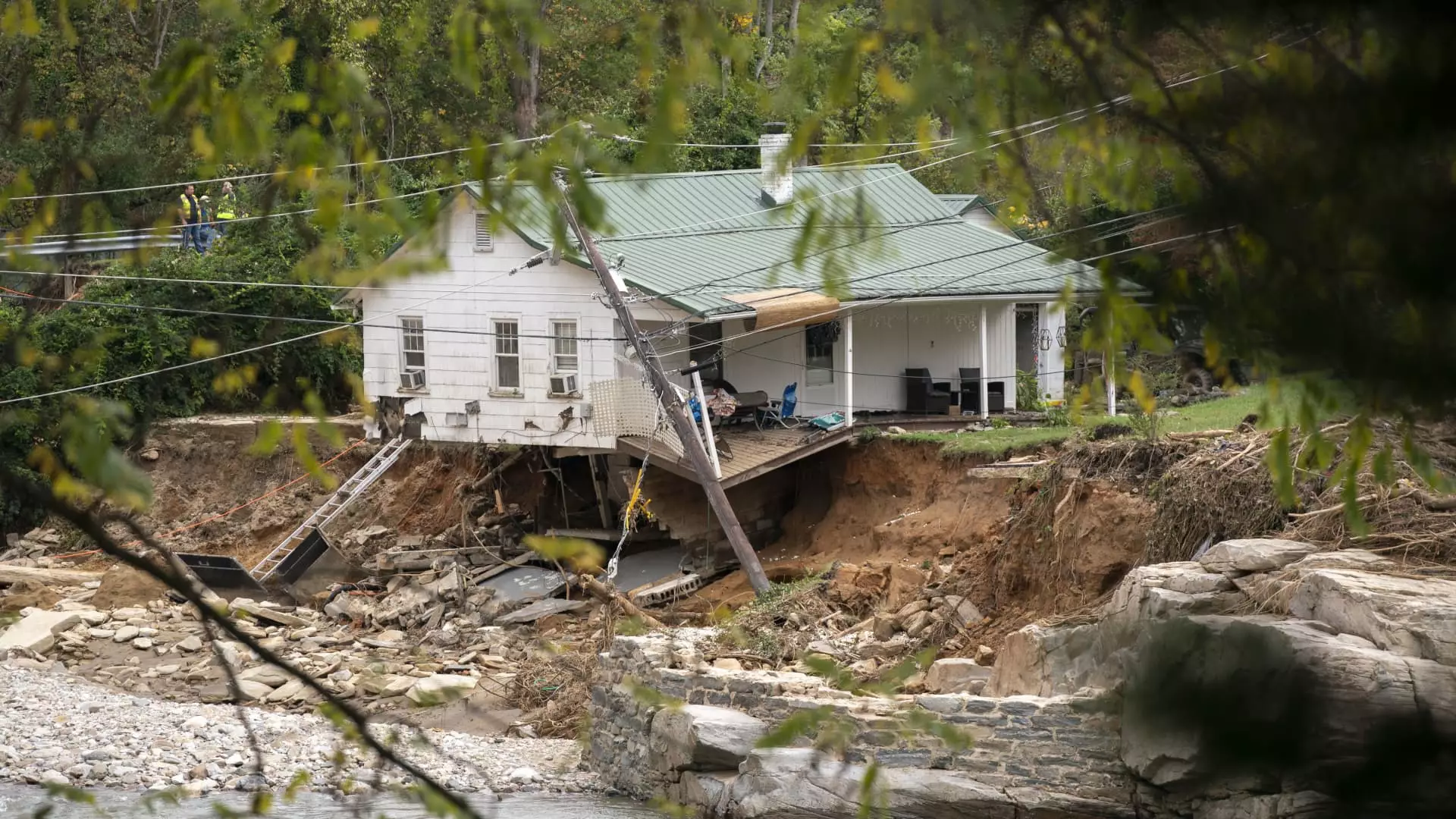The destructive force of natural disasters like Hurricane Helene serves as a poignant reminder of the undeniable influence of climate change on our lives and properties. As recent estimates underscore staggering insured losses amounting to over $6 billion, the real problem lies in the exponentially larger scope of uninsured losses, particularly evident in places hit hardest, such as North Carolina. This situation highlights a troubling trend: a significant number of homeowners in areas vulnerable to flooding lack adequate insurance coverage. This gap in protection arises mainly because a mere 4% of North Carolina homes are located in Federal Emergency Management Agency (FEMA)-designated flood zones, leading homeowners to mistakenly believe they are exempt from flood risks.
The reliance on FEMA flood zone designations has created a dangerous false sense of security. Many residents erroneously believe that unless their home is situated within the confines of a designated flood zone, they are not at risk. This assumption fails to account for changing weather patterns exacerbated by climate change. Acknowledging the inadequacies of traditional risk assessments, innovative companies like First Street have developed advanced technology that integrates climate change effects into property risk evaluations. Their findings suggest that nearly 12% of homes in North Carolina face significant flood risks, contradicting the conventional wisdom derived from FEMA designations. This misalignment raises critical questions about the existing paradigms of risk assessment.
With the growing awareness of climate-related risks, platforms such as Zillow have partnered with First Street to offer insightful climate risk data for homes on the market. This collaborative endeavor empowers prospective buyers and sellers with comprehensive information aimed at fostering informed real estate decisions. Climate risks are increasingly becoming central to the decision-making process, as highlighted by Skylar Olsen, Zillow’s chief economist. Each listing now includes risk scores for various climate threats, such as flooding, fires, and extreme temperatures. These assessments not only reflect present risks but also anticipated changes over the next 15 to 30 years, in line with common mortgage periods. As such, homeowners are now confronted with a more nuanced understanding of their property’s vulnerabilities.
Recent surveys indicate a significant shift in buyer behavior; over 80% of potential homebuyers now factor in climate risks during their purchasing decisions. Among these concerns, flood risk has emerged as the leading worry, followed closely by fire-related risks. An analysis performed by Zillow reveals alarming trends: over the past five years, a noticeable increase in properties listed with severe climate risks has occurred. Specifically, new listings demonstrate that 16.7% are presently at major wildfire risk, with 12.8% displaying high flood risk. This escalation in climate threats underscores the pressing need for adaptive strategies in home purchasing and real estate valuation.
The increasing emphasis on climate risks is poised to have profound ramifications for property values. As more buyers incorporate climate data into their decision-making, the real estate market must adapt to this new reality. The financial implications of rising insurance costs have already begun to reflect on home prices, and as the perception of risk escalates, the demand and value of properties in more vulnerable areas are likely to decrease. This phenomenon will force homeowners and prospective buyers to confront important questions regarding insurance, financial stability, and the long-term affordability of homes in risk-prone regions.
The melding of climate data with real estate purchasing practices marks a pivotal development in how we evaluate and mitigate risks associated with homeownership. As the landscape of natural disasters evolves with climate change, it is crucial for stakeholders—buyers, sellers, and real estate agents alike—to harness new technologies and insightful data to inform their choices. No longer should homeowners assume safety based on outdated flood zone designations; instead, they must actively seek comprehensive risk assessments that acknowledge the realities of our changing climate. Only then can we hope to navigate the complexities of homeownership while ensuring adequate protections against the forces of nature.


Leave a Reply